

c. 1700-1300 B.C.E.
Homer mentions the great city of Knossos in the Odyssey. It was located on Crete, the largest of the Aegean islands. Because by legend King Minos ruled this city, the civilization is thus termed Minoan. Sir Arthur Evans discovered the buried remains of this palace and adjoining buildings in 1900 which at its height covered about six acres. This large multi-storied palace was organized around a central court, but the plan itself was complex, often called labyrinthine, in reference to the legendary Cretan labyrinth. The palace contained well-stocked magazines, royal apartments, shrines, a throne room, and service areas. Sir Evans excavated and reconstructed much of the site with some restorations in different materials (for example, the restored stone columns were originally wood). For a map and additional pictures of this area, see this site.The South Propylon (west side restored with a copy of the Cup Bearer fresco); the north entrance; north pillar hall | ||
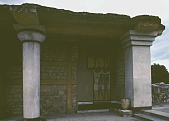 |
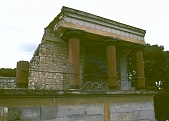 |
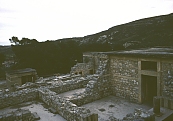 |
The theater areaThis is a paved court traversed by the raised processional way. On two sides are broad banks of steps, which may have been seats; the angle between contained them contained the "royal box." |
||
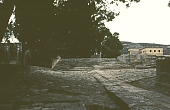 |
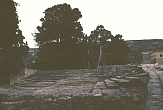 |
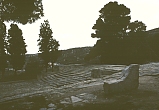 |
The royal quarters were on the east side of the palace. View of the east side; the Queen's megaron; a porch |
||
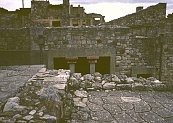 |
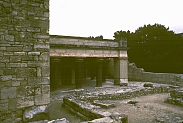 |
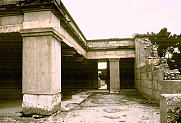 |
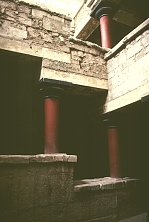
|
The Grand Staircase (left and below)A stepped balustrade separates the staircase from a large light-well, which has on two sides superimposed colonnades. The unique columns taper from a wide top to a narrower base. Originally the columns were wood. | |
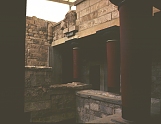
|
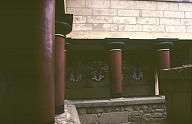
|
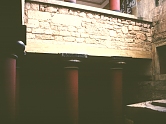 |
 Click here to see additional images of the Palace at Knossos.
Click here to see additional images of the Palace at Knossos.
 Click here to return to index of art historical sites.
Click here to return to index of art historical sites.
 Click here to return to index of artists and architects.
Click here to return to index of artists and architects.
 Click here to return to chronological index.
Click here to return to chronological index.
